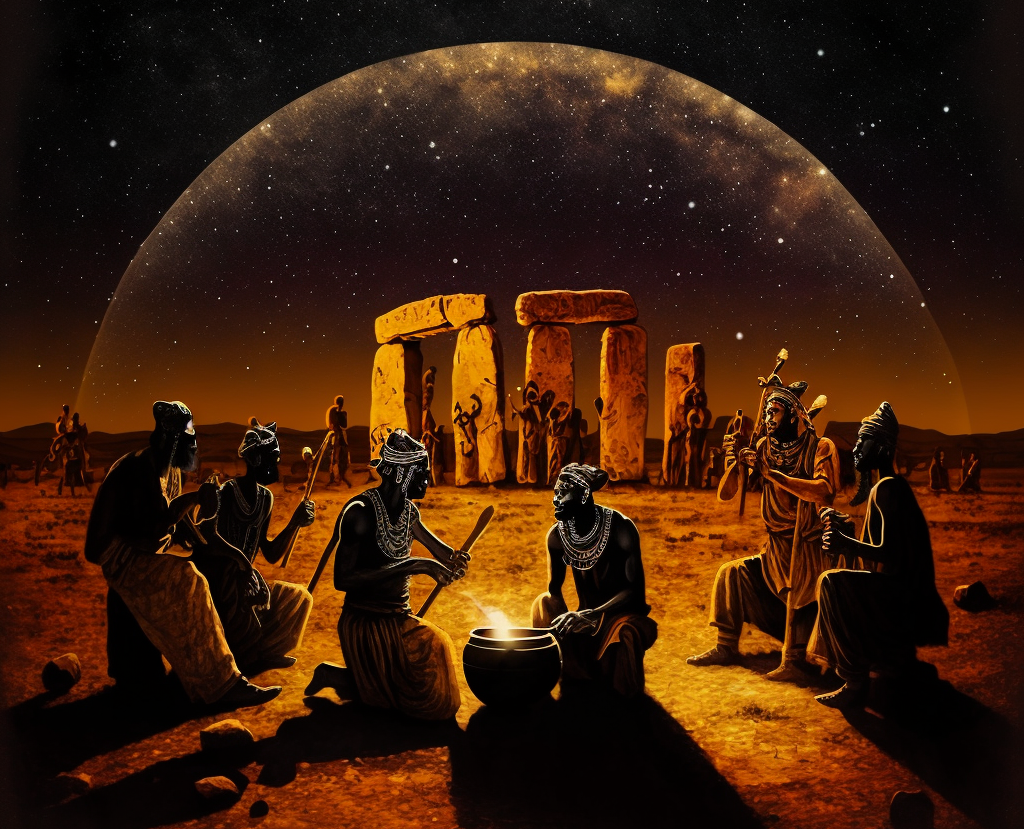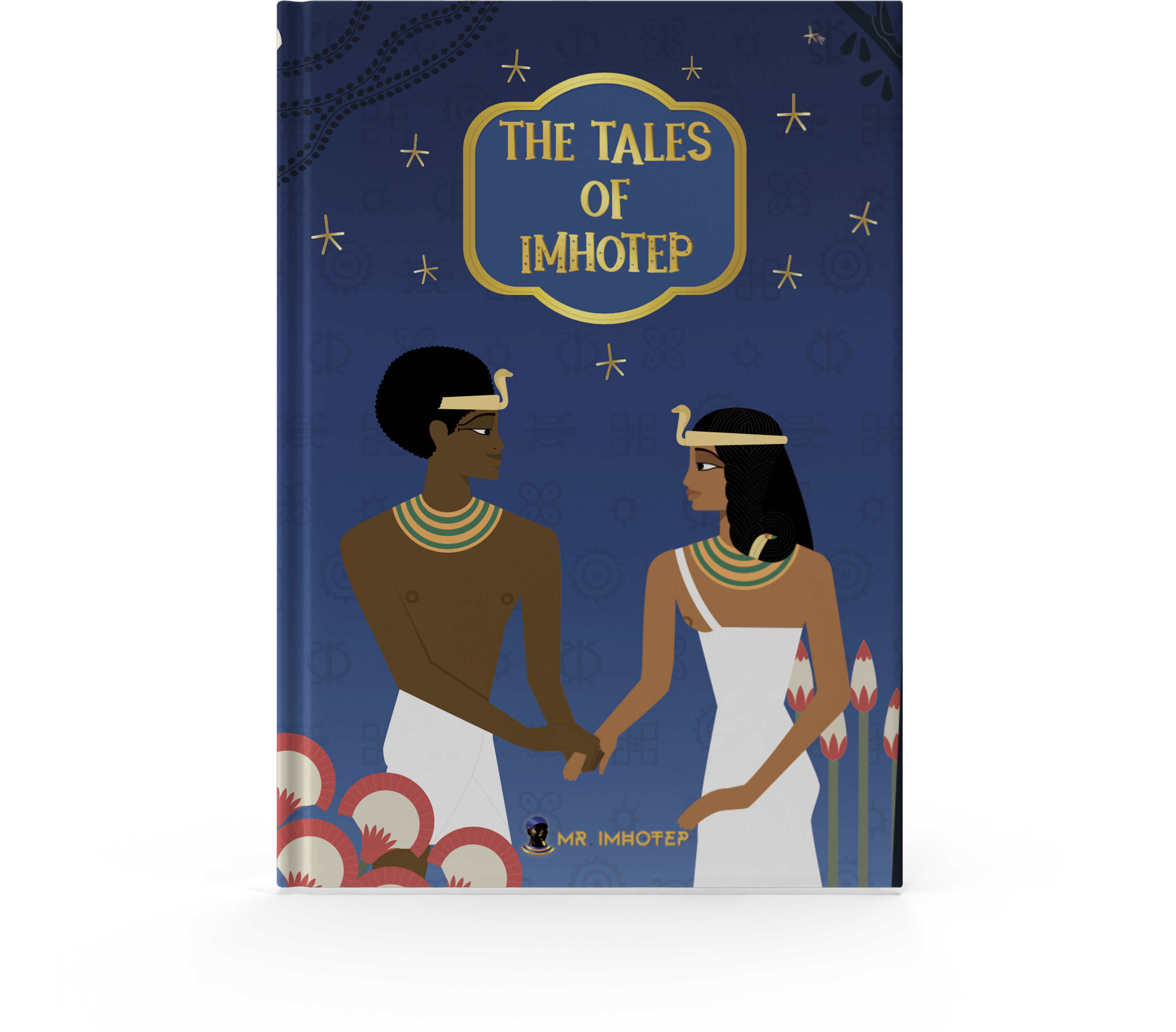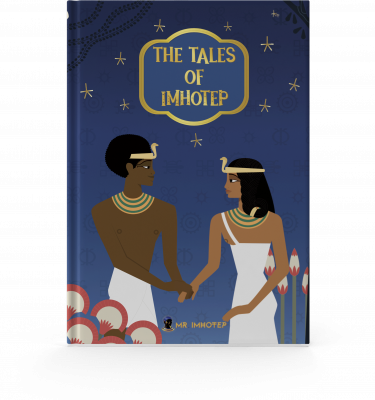Nabta Playa, a once vast and mysterious basin located deep in the Nubian Desert, has recently been revealed as one of the earliest and most significant archaeological sites of the Egyptian Neolithic period. Situated about 800 kilometers south of present-day Cairo and 100 kilometers west of Abu Simbel, this ancient site has been found to date back to around 7500 BC. The region is now characterized by numerous other archaeological sites, each offering a glimpse into the rich history of this ancient civilization. The discovery of Nabta Playa has not only shed light on the origins of the ancient Egyptian people, but it has also provided a window into the daily lives and cultural practices of one of the world’s most enduring civilizations.
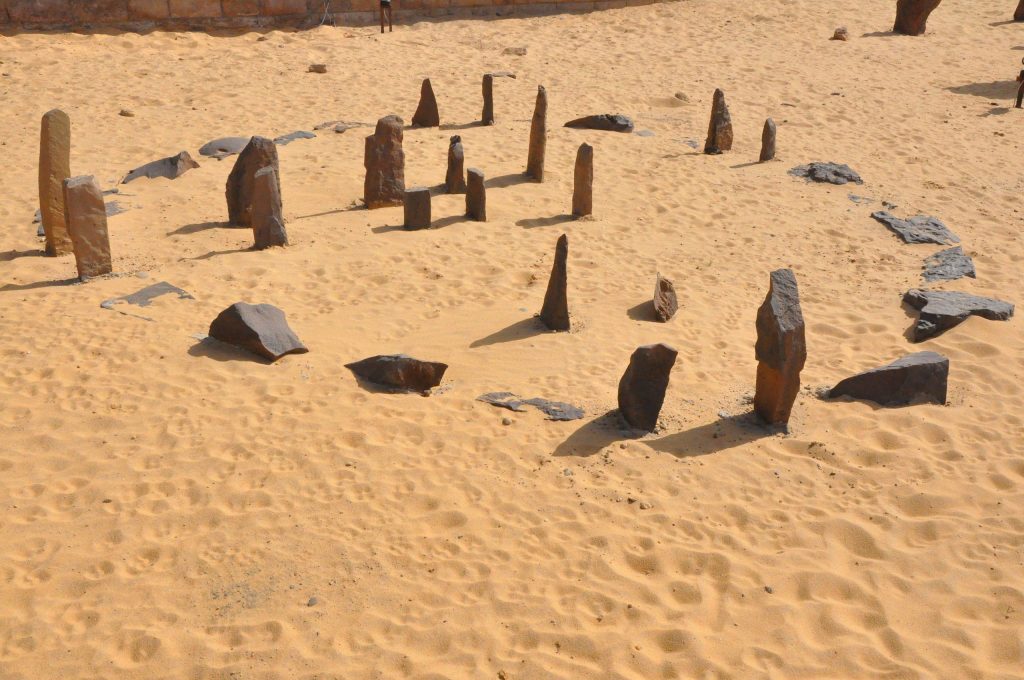
Early history
The western Egyptian desert may appear barren and inhospitable today, but new evidence suggests that this was not always the case. According to research, several humid periods occurred in the past, with the most recent one taking place between 130,000 and 70,000 years ago. During this time, the area was a savanna, home to numerous animals such as extinct buffalo and large giraffes, as well as varieties of antelope and gazelle. Starting around the 10th millennium BCE, the Nubian Desert began to receive more rainfall, filling a lake, which may have attracted early humans to the region in search of a reliable source of water.
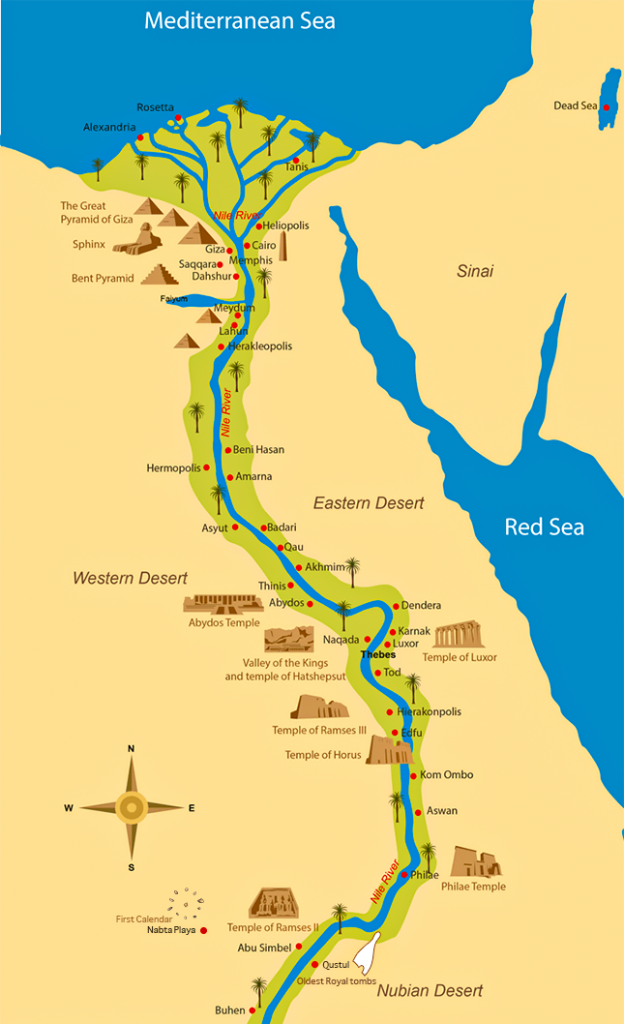
Organization
As the Western Egyptian desert is now barren, it may be hard to imagine that it was once a thriving oasis. However, archaeological discoveries at the site of Nabta Playa, located approximately 800 kilometers south of modern-day Cairo, reveal that this region was once home to a highly organized community during the New Stone Age. The people of Nabta Playa, who lived around 7500 BC, constructed rough stone built villages in planned designs, complete with deep wells that held water year-round. These wells were crucial for the survival of the community as the region was only occupied seasonally, most likely only during the summer when the local lake had enough water for grazing cattle.
What sets the people of Nabta Playa apart from their contemporaries in the Nile Valley is their advanced knowledge of astronomy. Comparative research indicates that the indigenous inhabitants of Nabta Playa may have had a significantly more advanced understanding of the stars and planets than previously thought possible for this time period. This discovery adds to our understanding of the capabilities of human civilization during this early period in history.
Ties to Ancient Egypt
Dating back to at least the 6th millennium BC, the site has provided evidence of a prehistoric religion or cult that existed among the inhabitants of this region. During the Late Neolithic period, which began around 5500 BC, a new group of people appeared with a “complex social system expressed in a degree of organization and control not previously seen.” These people were responsible for sacrificial cattle burials in clay-lined and roofed chambers, covered by rough stone tumuli.
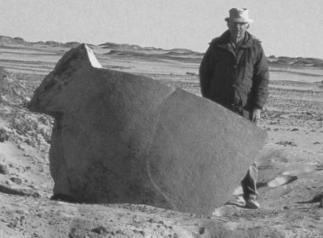
Some experts have suggested that the associated cattle cult in Nabta Playa marks an early evolution of Ancient Egypt’s Hathor cult, the goddess of love, fertility, and childbirth. Hathor was worshipped as a nighttime protector in desert regions, and many aspects of political and ceremonial life in prehistoric Egypt and the Old Kingdom reflect a strong influence from Saharan cattle pastoralists.
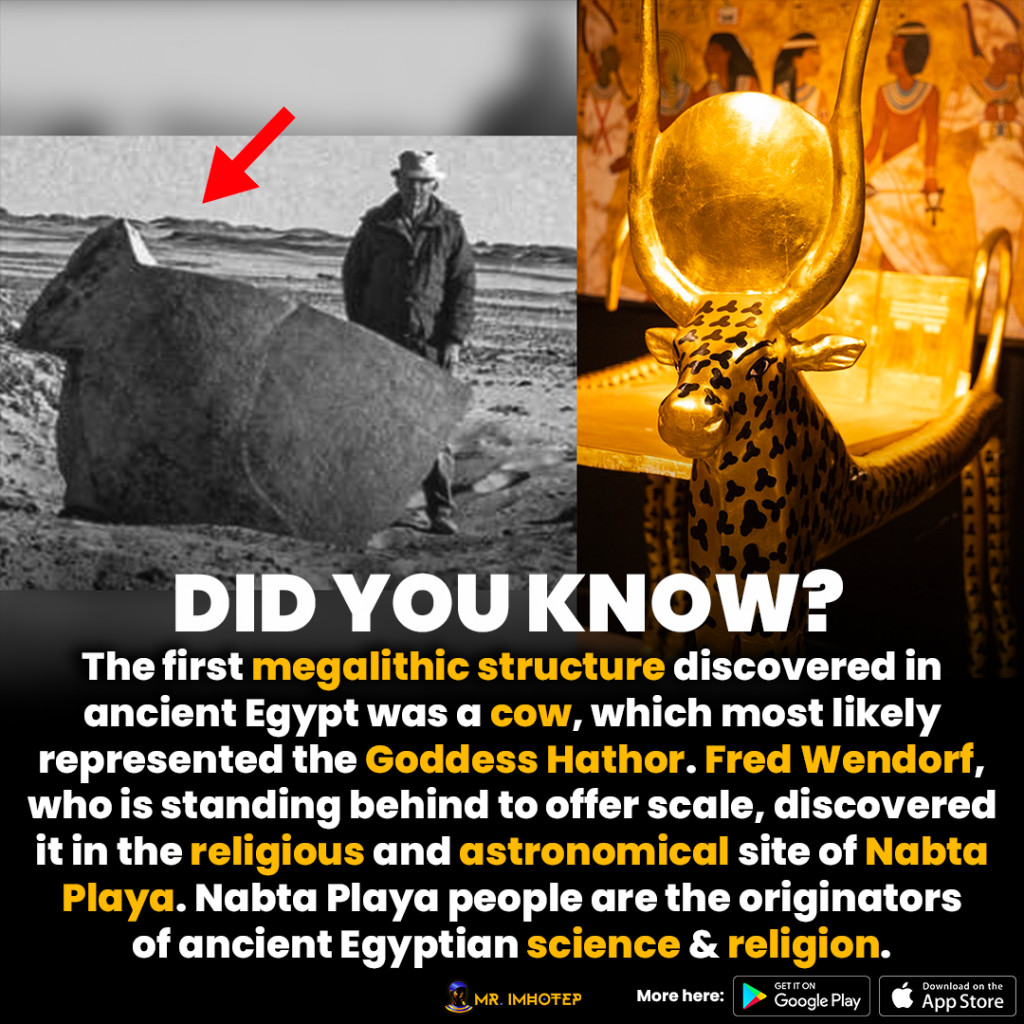
In addition to the religious practices, Nabta Playa also features rough megalithic stone structures buried underground, including one structure that contained what experts described as “the oldest known sculpture in Egypt.” This discovery adds to the growing body of evidence that the people of Nabta Playa were a highly advanced and organized society, with a deep understanding of astronomy and a rich cultural heritage.
Population and Occupation
Archaeological findings indicate human occupation in the region dating back to at least the 10th and 8th millennium BC.The discoverer of the site, Fred Wendorf, and ethno-linguist Christopher Ehret, suggest that these early inhabitants may have been early pastoralists or semi-pastoralists, although this theory is disputed by other sources.
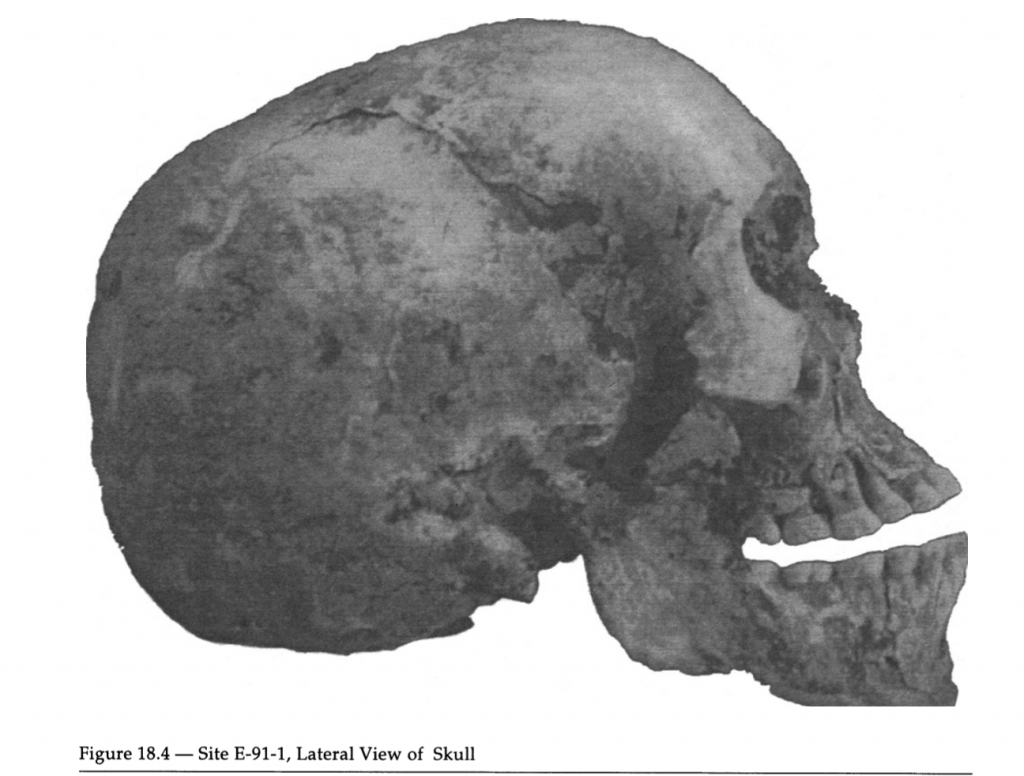
The people of that time consumed and stored wild sorghum, and used ceramics adorned by complicated painted patterns. Analysis of human remains by Fred Wendorf and reported in “Holocene Settlement of the Egyptian Sahara” suggests a sub-Saharan African origin for the site’s inhabitants, while dental and skeletal analyses by Joel D. Irish also tentatively suggests a mainly sub-Saharan African affinity and origin for Nabta Playa’s inhabitants, with possible North African tendencies in some. In other words, these people of the Egyptian Sahara who will later become the ancient Egyptians were phenotypically identical to Black Africans. This is another evidence of the Black origin of the ancient Egyptian civilization. The strong subnasal prognathism of the inhabitants of Nabta playa is evident, as you can see in the following image. A feature that has been found in all significant founding communities of Ancient Egypt, like the Badarians or the people of Naqada.
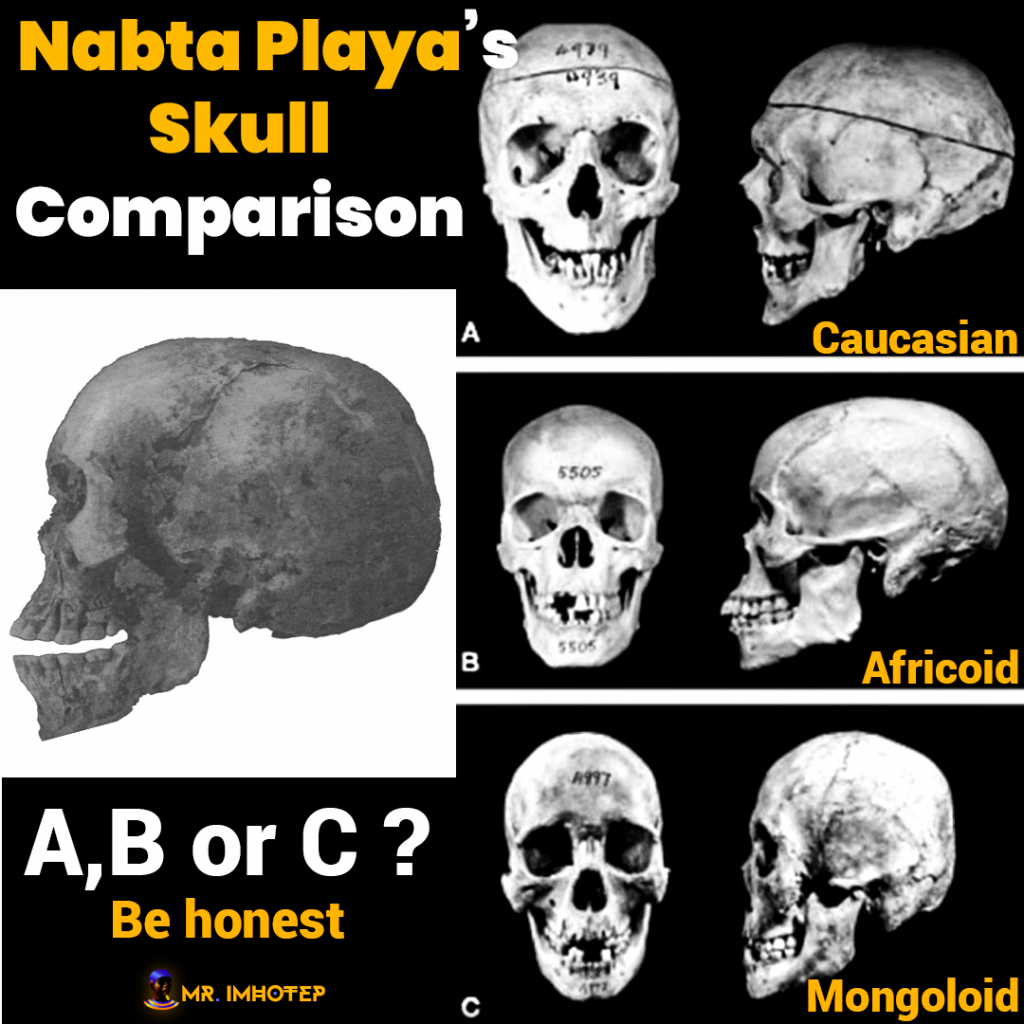
By the 7th millennium BC, larger and more organized settlements were found in the region, relying on deep wells for sources of water. Small huts were constructed in straight rows, and sustenance included wild fruit, legumes, millets, sorghum, and tubers. In the late 7th millennium BC, goats and sheep, apparently imported from Western Asia, also appear, along with many large hearths.
Astronomical observation
Egypt, fashioned what may be among the world’s earliest known archeoastronomical devices. These structures, which are roughly contemporary to the Goseck circle in Germany and the Mnajdra megalithic temple complex in Malta, include alignments of stones that may have indicated the rising of certain stars and a “calendar circle” that indicates the approximate direction of summer solstice sunrise. According to experts, the “calendar circle” may be a misnomer as the spaces between the pairs of stones in the gates are a bit too wide, and the distances between the gates are too short for accurate calendar measurements. An inventory of Egyptian archaeoastronomical sites for the UNESCO World Heritage Convention evaluated Nabta Playa as having “hypothetical solar and stellar alignments” showcasing the advanced knowledge of astronomy of these ancient peoples.
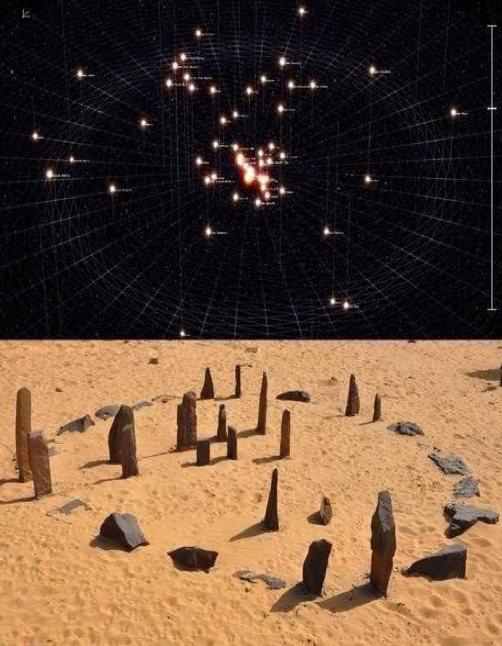
Claim for early alignment and star maps
A recent hypothesis put forth by astrophysicist Thomas G. Brophy suggests that the people of Nabta Playa may have used a “calendar circle” to track the movements of the stars, specifically the constellation of Orion. According to Brophy, the circle, made of smaller stones, was constructed and used around 4800 BC, and the alignments of larger megalithic stones nearby corresponded to the same stars represented in the circle. He also proposes that the circle’s representation of the dual date was a conceptual representation of the motion of the sky over a precession cycle. Radiocarbon dating of campfires in the area supports the idea that the Nabta Playa civilization had a sophisticated understanding of astronomy dating back to between 6400 BCE and 4900 BCE.
References:
- Black Genesis – Robert Beauval
- Holocene Settlement of the Egyptian Sahara Vol. 1 – by Fred Wendorf and Romual Schild
- “Human Skeletal Remains from Three Nabta Playa Sites”. Holocene Settlement of the Egyptian Sahara. pp. 521–528. doi:10.1007/978-1-4615-0653-9_18. ISBN 978-1-4613-5178-8 – via ResearchGate. Irish, Joel D. (2001).

